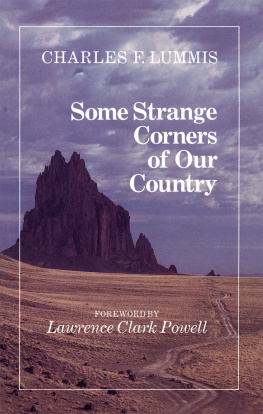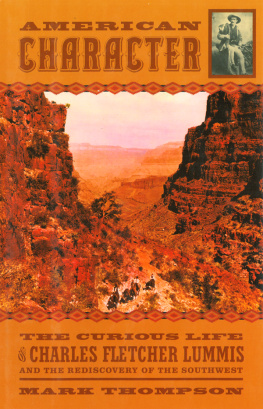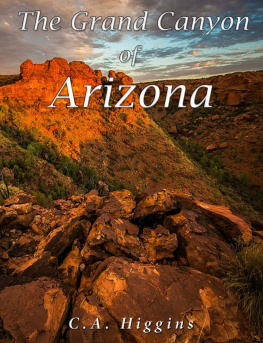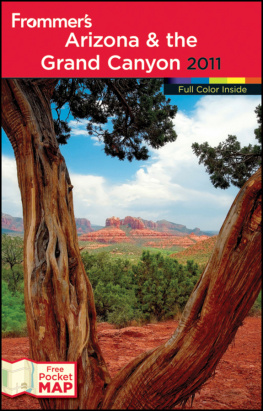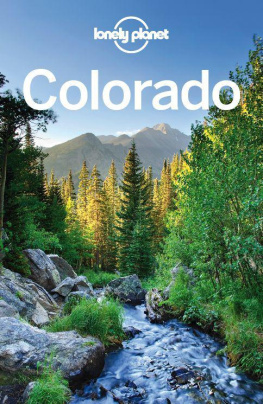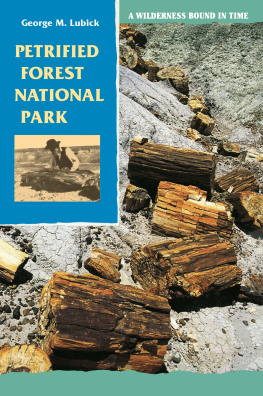Charles Lummis - Some Strange Corners of Our Country
Here you can read online Charles Lummis - Some Strange Corners of Our Country full text of the book (entire story) in english for free. Download pdf and epub, get meaning, cover and reviews about this ebook. year: 2015, publisher: University of Arizona Press, genre: Detective and thriller. Description of the work, (preface) as well as reviews are available. Best literature library LitArk.com created for fans of good reading and offers a wide selection of genres:
Romance novel
Science fiction
Adventure
Detective
Science
History
Home and family
Prose
Art
Politics
Computer
Non-fiction
Religion
Business
Children
Humor
Choose a favorite category and find really read worthwhile books. Enjoy immersion in the world of imagination, feel the emotions of the characters or learn something new for yourself, make an fascinating discovery.
- Book:Some Strange Corners of Our Country
- Author:
- Publisher:University of Arizona Press
- Genre:
- Year:2015
- Rating:4 / 5
- Favourites:Add to favourites
- Your mark:
- 80
- 1
- 2
- 3
- 4
- 5
Some Strange Corners of Our Country: summary, description and annotation
We offer to read an annotation, description, summary or preface (depends on what the author of the book "Some Strange Corners of Our Country" wrote himself). If you haven't found the necessary information about the book — write in the comments, we will try to find it.
Lummiss prose portraits of the Grand Canyon, Petrified Forest, Montezuma Castle, and other sites reflect the authors knowledge of Southwest anthropology and history.
Some Strange Corners of Our Country — read online for free the complete book (whole text) full work
Below is the text of the book, divided by pages. System saving the place of the last page read, allows you to conveniently read the book "Some Strange Corners of Our Country" online for free, without having to search again every time where you left off. Put a bookmark, and you can go to the page where you finished reading at any time.
Font size:
Interval:
Bookmark:

LAWRENCE CLARK POWELL
 E set out alone on foot, September 11,1884, to walk from Ohio to California andhe made it, arriving in Los Angeles the next year on the first of February. By anotherten years he had become the greatest booster the Southwest has ever known.
E set out alone on foot, September 11,1884, to walk from Ohio to California andhe made it, arriving in Los Angeles the next year on the first of February. By anotherten years he had become the greatest booster the Southwest has ever known.
This Yankee maverick was Charles Fletcher Lummis, called Lum, the son of a Massachusettsminister, not quite a Harvard graduate, having withdrawn just before Commencementwhen trouble with two women threatened to fence him in. He fathered a daughter byone and married the other, then left her in Cambridge to finish her medical degreewhile he headed for Ohio to work on her fathers farm. He soon found something betteras editor of the Scioto Gazette. Young Lum always managed to land on his feet andrunning.
He needed something to settle him down. With a gift for writing first apparent atHarvard and developed while on the Chillicothe newspaper, Lummis struck a long-distancedeal with General Harrison Gray Otis, owner of the LosAngeles Times, that wouldtake him on that long walk, filing dispatches of his adventures along the way. Hehad plenty of them at least he said so.
And so he set out for what promised to be a better land and job. News had reachedthe East of what became known as the Boom of the Eighties in Southern California.It was the craziest time since the Gold Rush. His route was the Old Santa F Trail,followed by traders and travelers since the 1820s, and now by the new railroad tothe coast.
Unlike the argonauts, Lummis did not challenge the Rockies, taking instead the lowroad to Santa F. Like those before him, he marveled at sight of the battlements,shutting the whole western sky from north to south, far as sight could reach, distant,severe and cold.
That turn in the road was the most meaningful ever taken by Lummis, for it led toa lifelong commitment to a land of Sun, Silence and Adobe. Not only did he discovera newfoundland, he was met there by warm and welcoming people whose skin was a differentcolor from his. We all start with racial prejudice, he was to say, and few graduatefrom it. He was one who did, as he became an eloquent champion of the inhabitants,Indian and Spanish. He was also the first to christen that land The Southwest andto coin the phrase See America First.
In Santa F, letters of introduction led to Amado Chavez, scion of an old New Mexicanfamily and Speaker of the territorial House of Representatives. He soon pressedon west, visiting the Chavez domain at the foot of Mt. Taylor, easternmost sacredpeak of the Navajos. There he formed a lasting bond with that family. His firstson, lost to death at six, was named Amado.
In Southern California, Lummis had another unexpected welcome when he was met atthe Los Angeles city limits by General Otis himself and given the job of city editorof the Times. After five hectic years, including coverage of Geronimos uprisingand failure to become a good husband to his wife Dorothea, now practicing medicinein Los Angeles, Lummis took refuge in a paralytic stroke that crippled his left side.
He recuperated on the Chavez hacienda at San Mateo, then went to live with the TewaIndians at Isleta Pueblo, on the Rio Grande below Albuquerque. There he was nursedback to health by the missions schoolteacher, Eva Frances Douglas. Despite Dr. Dorotheasefforts to hold him, Lummis gained his freedom to marry the younger woman. In anunusual act of thanks, he dedicated his book, Land of Poco Tiempo, To Eva and Dorothea.
Once again he began to write to make a living, eastern magazines his market, theSouthwest his subject. In those early years of the transcontinental railroad, whatbecame the Santa F found it good business to give Lummis a pass on either Pullmanor caboose.
He was thus able to make several trips to New York, where he lunched with such literaryarbitersasRichard Watson Gilder and Brander Matthews. At Tiffanys he offeredto showtheirjewels on the bridle of his horse Alazan. The Harvard connection didhimnoharm. Now a western eccentric, he paid a Manhattan tailor twenty-five dollarstomakehim a three-piece suit of corduroy, henceforth his standard apparel, sometimestoppedwithan Indian headband and a red sash around his waist.
During the early 1890s Lummis exploded with articles, all celebrating his new land.From 1891 to 1894 they were gathered in six solid volumes. This honeymoon harvestmarked his high point as a promoter of the Southwest. Although he lived until 1928,based in Los Angeles, and never stopped fighting for the preservation of our culturalpast, Lummis did not surpass that burst of books.
Now a century later, while civilization has come to every corner, it has not changedthe wonders celebrated in Some Strange Corners of Our Country. Therein Lummis fixedthe vision and configuration of an Enchanted Land. Thirty years later when he haltinglyenlarged that book into Mesa, Canon and Pueblo, the freshness was gone. The resultwas heavy, the updating outdated. His publisher had to nag him to finish; his heartwas not in it.
In that one halcyon time, newly married and father of a growing family, Lummis flowered.The pressures of being celebrated and controversial lay ahead, and he led a carefreeif Spartan existence, living on wild fruits and on jam and doughnuts of his own making.His unpublished journal of those three and a half years at Isleta are rich with incidentsof his daily life not included in his books, such as a glimpse of a 400-pound Indiangrandmother whose job was to sit over the place in the floor beneath which the familysgold was buried. Some ties with Isleta lasted the rest of his life, when the youngsons of his old friends came to Los Angeles to help him build El Alisal, the greatstone house on the bank of the Arroyo Seco.
Among those early books, Some Strange Corners of Our Country remains one of the best,as sound as ever in knowl edge and strong in feeling. Although published by Century,most of its chapters first appeared in St. Nicholas magazine. Its bold illustrationswere replaced in the later volume by pallidly reproduced photographs taken by theauthor. Not until 1987 were his Pueblo documentary views well printed.
Thanks to preservation of those natural wonders as national parks and monuments first urged by Lummis todays visitors to the Southwest will find this book auseful companion. The land is still there in all its immensity: the Grand Canyonhas been saved from further damming, although its sky is noisy with aircraft; MontezumaWell still flows into Beaver Creek through a crack in the limestone, while MontezumaCastle stands guard; the Petrified Forest, Tonto Bridge, and the Lava Flow have beenpreserved; and Inscription Rock, safeguarded in 1906 by President Theodore Roosevelt,Lummiss Harvard schoolmate, still emerges from the low pinon-juniper forest as ElMorro National Monument. All is still there, timelessly pristine.
That is why this first look, with an understanding of what is seen, is worth reprinting.It endures as one of the lasting achievements of this first and best popularizerof the Southwest.
THE GRANDEST GORGE IN THE WORLD.
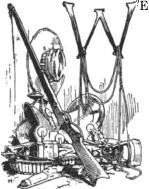 live in the most wonderful of lands; and one of the most wonderful things in itis that we as Americans find so little to wonder at. Other civilized nations takepride in knowing their points of natural and historic interest; but when we havepointed to our marvelous growth in population and wealth, we are very largely done,and hasten abroad in quest of sights not a tenth part so wonderful as a thousandwonders we have at home and never dream of. It is true that other nations are older?and have grown up to think of something besides material matters; but our youth andour achievements are poor excuse for this unpatriotic slighting of our own country.There is a part of America,a part even of the United Statesof which Americans knowas little as they do of inner Africa, and of which too many of them are much lessinterested to learn. With them to travel means only to go abroad; and they calla man a traveler who has run his superficial girdle around the world and is as ignorantof his own country (except its cities) as if he had never been in it. I hope to liveto see Americans proud of
live in the most wonderful of lands; and one of the most wonderful things in itis that we as Americans find so little to wonder at. Other civilized nations takepride in knowing their points of natural and historic interest; but when we havepointed to our marvelous growth in population and wealth, we are very largely done,and hasten abroad in quest of sights not a tenth part so wonderful as a thousandwonders we have at home and never dream of. It is true that other nations are older?and have grown up to think of something besides material matters; but our youth andour achievements are poor excuse for this unpatriotic slighting of our own country.There is a part of America,a part even of the United Statesof which Americans knowas little as they do of inner Africa, and of which too many of them are much lessinterested to learn. With them to travel means only to go abroad; and they calla man a traveler who has run his superficial girdle around the world and is as ignorantof his own country (except its cities) as if he had never been in it. I hope to liveto see Americans proud of
Font size:
Interval:
Bookmark:
Similar books «Some Strange Corners of Our Country»
Look at similar books to Some Strange Corners of Our Country. We have selected literature similar in name and meaning in the hope of providing readers with more options to find new, interesting, not yet read works.
Discussion, reviews of the book Some Strange Corners of Our Country and just readers' own opinions. Leave your comments, write what you think about the work, its meaning or the main characters. Specify what exactly you liked and what you didn't like, and why you think so.

